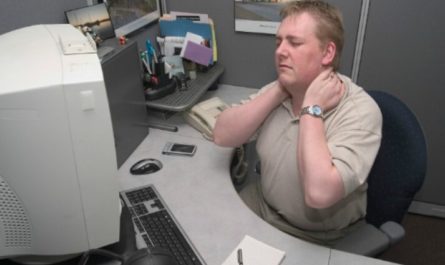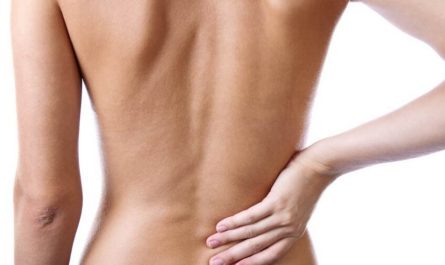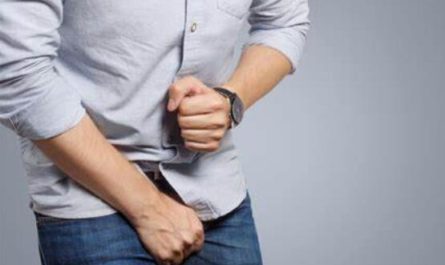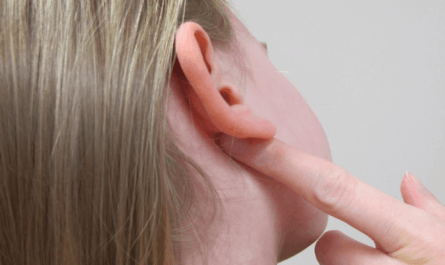Back pain and leg weakness are common symptoms that can significantly impact an individual’s quality of life. These symptoms often occur together, leaving sufferers searching for answers and relief. The symptoms can arise from various underlying conditions, ranging from minor muscle strains to more serious spinal disorders. Understanding the potential causes and appropriate treatments is crucial for effective management. This article will explore 14 common causes of back pain and leg weakness, along with their respective treatment options.

14 Common Causes of Back Pain and Leg Weakness
1. Lumbar Disc Herniation
A herniated disc occurs when the soft inner core of a spinal disc pushes out through a tear in the tough exterior. If the herniated portion of the disc compresses a nerve root, it can cause radiating leg pain, numbness, tingling, and weakness. Disc herniations are most common in the lower back (lumbar spine) and typically affect people between the ages of 30-50.
Risk factors for disc herniation include obesity, smoking, repetitive lifting, and prolonged sitting. Disc herniations can often be managed with a combination of rest, pain relievers, physical therapy, and sometimes epidural steroid injections.
Surgery may be necessary if conservative treatments fail or if there is significant nerve compression.
2. Spinal Stenosis
Spinal stenosis is a narrowing of the spinal canal that can put pressure on the spinal cord and nerve roots. It is often caused by age-related changes like thickening of spinal ligaments, enlargement of facet joints, and bulging discs.
Symptoms include back pain, leg pain that worsens with walking or standing, and leg numbness or weakness. Spinal stenosis is most common in people over age 50.
Treatment options for spinal stenosis include pain medications, physical therapy, steroid injections, and sometimes surgery to decompress the spinal canal. Maintaining good posture, and staying active. Doing exercises to strengthen the core and improve flexibility can help manage symptoms and prevent progression.
3. Spondylolisthesis
Spondylolisthesis occurs when one vertebra slips forward on the vertebra below it. This can cause the spinal canal to narrow, putting pressure on nerve roots. Spondylolisthesis often causes low back pain that radiates into the buttocks and back of the thighs. Leg weakness may occur if the slipped vertebra compresses the spinal nerves. It can affect people of any age.
Spondylolisthesis can be caused by a congenital defect, injury, or age-related wear and tear. Treatment depends on the severity of the slip and may include rest, bracing, physical therapy, and sometimes surgery to fuse the affected vertebrae.
Try to Maintain a healthy weight, avoid high-impact activities, and do exercises to strengthen the core. Improve flexibility can also help prevent spondylolisthesis from worsening.

4. Sciatica
Sciatica refers to pain that radiates along the path of the sciatic nerve, which runs from the lower back through the hips and buttocks and down each leg.
This most commonly occurs when a herniated disc or bone spur compresses part of the nerve. Sciatica typically causes pain in one leg, as well as numbness, tingling, or weakness. The pain is often described as sharp and shooting.
Treatment for sciatica depends on the underlying cause but may include pain relievers, anti-inflammatory drugs, muscle relaxants, physical therapy, and sometimes surgery.
Applying heat or cold, stretching, and avoiding prolonged sitting or bed rest can also help relieve symptoms. Most cases of sciatica resolve within a few weeks with conservative treatment.
5. Cauda Equina Syndrome
Cauda equina syndrome is a rare but serious condition that occurs when the bundle of nerves at the end of the spinal cord (cauda equina) is compressed. It is a surgical emergency that requires prompt treatment to avoid permanent damage.
Symptoms include severe low back pain, leg weakness and numbness, and loss of bowel or bladder control. Causes include large disc herniations, spinal stenosis, tumors, and fractures.
Cauda equina syndrome requires immediate medical attention and often emergency surgery to decompress the nerves. Delaying treatment can lead to permanent paralysis, incontinence, and sexual dysfunction. Recovery depends on the severity of nerve damage and how quickly treatment is received.
6. Spinal Tumors
Spinal tumors can arise from the spinal cord, nerve roots, vertebrae, or surrounding soft tissues. Depending on their location, spinal tumors can cause back pain, leg weakness, numbness, and difficulty walking.
Other symptoms may include loss of sensation, paralysis, and loss of bowel or bladder control. Prompt diagnosis and treatment are important to prevent permanent neurological damage.
Treatment for spinal tumors depends on the type, location, and stage of the tumor but may include surgery, radiation therapy, chemotherapy, or a combination.
7. Spinal Infections
Infections of the spine, such as vertebral osteomyelitis and spinal epidural abscess, are rare but serious causes of back pain. They can be caused by bacteria, fungi, or tuberculosis. Symptoms include severe back pain, fever, chills, and neurological deficits like leg weakness or numbness. Spinal infections require prompt treatment with antibiotics and sometimes surgery.
Risk factors for spinal infections include diabetes, HIV, intravenous drug use, and recent spinal surgery or injection. Prompt diagnosis and treatment with antibiotics is critical to prevent the infection from spreading. Surgery may be necessary to drain abscesses or remove infected tissue.
8. Ankylosing Spondylitis
Ankylosing spondylitis is a type of arthritis that causes inflammation of the spinal joints (vertebrae). Over time, chronic inflammation can lead to fusion of the vertebrae. Symptoms include chronic low back pain and stiffness that is worse in the morning and improves with activity. In advanced cases, the spine can become rigid and brittle, increasing the risk of fractures.
Ankylosing spondylitis is most common in young men and is thought to have a genetic component. Treatment focuses on relieving pain and stiffness with NSAIDs, and physical therapy. Sometimes biologic medications to reduce inflammation. Regular exercise and maintaining good posture can help prevent disability.
9. Osteoporosis
Osteoporosis is a condition that causes bones to become weak and brittle. It is most common in older women but can affect men and younger people as well.
Osteoporosis increases the risk of spinal compression fractures, which can cause sudden, severe back pain and loss of height. Multiple compression fractures can lead to kyphosis, an abnormal forward curvature of the spine.
Risk factors for osteoporosis include age, female sex, menopause, smoking, excessive alcohol use, and certain medications like steroids. Prevention and treatment of osteoporosis involves calcium and vitamin D supplementation, weight-bearing exercise, and medications to increase bone density. Treating underlying conditions like hyperthyroidism and celiac disease is also important.
10. Degenerative Disc Disease
Degenerative disc disease refers to the gradual deterioration of spinal discs that occurs with aging. As discs lose hydration and wear down, they become less effective at cushioning the vertebrae.
This can lead to low back pain that worsens with sitting, bending, or lifting. Degenerative disc disease is extremely common, affecting most people to some degree by age 60.
While there is no cure for degenerative disc disease, symptoms can often be managed with a combination of pain relievers, physical therapy, and lifestyle modifications.
Maintaining a healthy weight, exercising regularly, and practicing good posture can help slow the progression of disc degeneration. In severe cases, surgery may be necessary to remove damaged discs or fuse the affected vertebrae.

11. Spinal Arthritis
Arthritis can affect the facet joints that connect the vertebrae in the spine. The most common types are osteoarthritis (caused by wear and tear) and rheumatoid arthritis (an autoimmune disease).
Symptoms include back pain and stiffness that is worse in the morning and improves with activity. In severe cases, bone spurs can form and compress nerve roots, causing radiating leg pain or weakness.
Treatment for spinal arthritis depends on the type and severity but may include pain relievers, anti-inflammatory drugs, physical therapy, and sometimes surgery to remove bone spurs or fuse the affected joints. Staying active, maintaining a healthy weight, and doing exercises around the spine can help manage symptoms.
12. Vertebral Compression Fractures
Compression fractures occur when the vertebral body collapses due to weakened bone, such as from osteoporosis or cancer. They can cause sudden, severe back pain that worsens with standing or walking.
Multiple compression fractures can lead to loss of height and kyphosis. Compression fractures are most common in the thoracic (mid-back) and lumbar spine.
Treatment for compression fractures depends on the underlying cause and severity but may include pain medications, back bracing, and sometimes surgery to stabilize the affected vertebrae. Preventing osteoporosis through calcium and vitamin D supplementation, and medications can help reduce the risk of compression fractures.
13. Spinal Cord Injury
Spinal cord injuries can occur due to trauma, such as from a fall, car accident, or sports injury. Depending on the level and severity of injury, spinal cord damage can cause back pain, leg weakness or paralysis, loss of sensation, and loss of bowel or bladder control. Emergency treatment is critical to minimize damage and improve the chances of recovery.
Treatment for spinal cord injuries may include surgery to stabilize the spine, medications to manage pain and prevent complications, and rehabilitation to help restore function.
The prognosis depends on the level and completeness of the injury, with higher and more complete injuries resulting in more severe disability. Preventing spinal cord injuries through safety measures like wearing seatbelts and using proper sports equipment is crucial.
14. Peripheral Neuropathy
Peripheral neuropathy refers to damage or dysfunction of the peripheral nerves that carry signals between the brain, spinal cord, and the rest of the body. It can be caused by diabetes, vitamin deficiencies, autoimmune disorders, infections, and certain medications.
Symptoms include numbness, tingling, burning pain, and weakness that typically starts in the feet and spreads upward. Treatment focuses on managing the underlying cause and relieving symptoms.
Preventing peripheral neuropathy involves controlling risk factors like diabetes, alcohol use, and vitamin deficiencies. Treatment may include medications to relieve pain and improve nerve function, and physical therapy.
This can help maintain strength and mobility, and lifestyle changes to manage underlying conditions. In some cases, surgery may be necessary to release trapped nerves or remove tumors pressing on nerves.
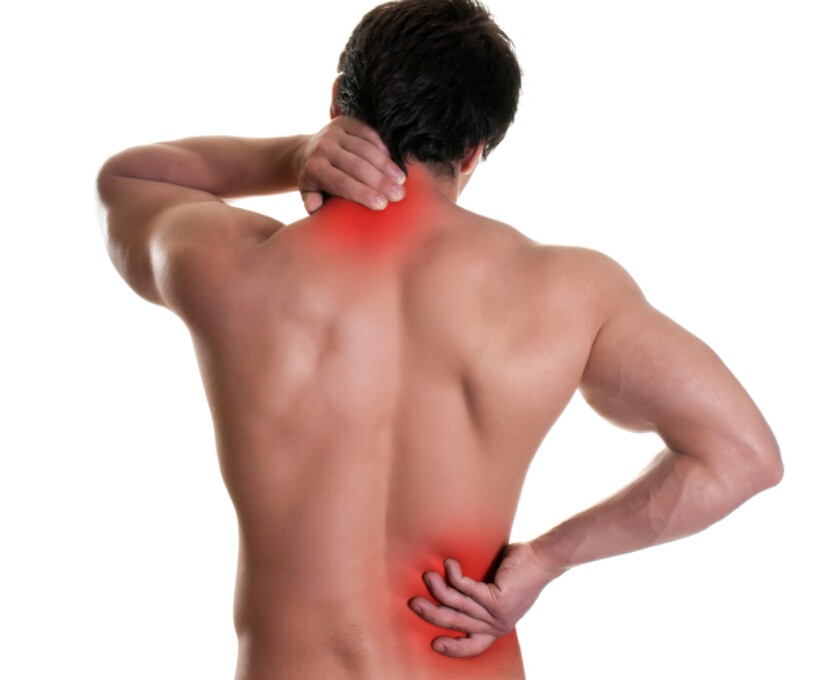
How to Prevent Back Pain and Leg Weakness
1. Maintain a good posture: Avoid slouching or hunching over for extended periods. Sit or stand up straight with your shoulders back and your spine aligned.
2. Exercise regularly: Engage in activities that strengthen your core muscles, such as yoga, Pilates, or weightlifting. Strong core muscles provide support for your back and help prevent back pain.
3. Stretch regularly: Incorporate stretching exercises into your daily routine to improve flexibility and reduce muscle tightness. Focus on stretching your hamstrings, hip flexors, and lower back muscles.
4. Lift properly: When lifting heavy objects, bend at your knees and use your leg muscles to lift, rather than straining your back. Avoid twisting or jerking motions while lifting.
5. Maintain a healthy weight: Excess weight puts additional strain on your back, leading to back pain and leg weakness. Maintain a healthy diet and engage in regular physical activity to manage your weight.
6. Wear supportive footwear: Choose shoes that provide proper arch support and cushioning to help distribute your body weight evenly and reduce strain on your back and legs.
7. Take breaks and change positions: If you have a sedentary job or lifestyle, make sure to take regular breaks to stand up, stretch, and change positions. Prolonged sitting or standing can put strain on your back and legs.
8. Practice proper ergonomics: Ensure that your workspace is set up ergonomically, with your chair, desk, and computer positioned at the correct height and distance to promote good posture.
9. Avoid high-impact activities: If you have a history of back pain or leg weakness, avoid activities that involve excessive jarring or impact, such as running or jumping, as they can worsen your symptoms.
When to See a doctor?
You should see a doctor if you experience any of the following symptoms:
- Severe or persistent back pain that does not improve with rest or self-care measures.
- Back pain is accompanied by numbness or tingling in the legs or feet.
- Weakness or difficulty controlling your legs or feet.
- Loss of bladder or bowel control.
- Back pain following a fall, injury, or accident.
- Back pain that is accompanied by unexplained weight loss or fever.
- Back pain that worsens at night or disrupts your sleep.
- Back pain that is associated with a recent infection or immunosuppression.
- Back pain that is accompanied by other symptoms, such as chest pain or shortness of breath.
These symptoms may indicate a more serious underlying condition, such as a herniated disc, spinal stenosis, or nerve compression, and require medical attention. It’s always better to seek professional advice if you are unsure or concerned about your symptoms.

